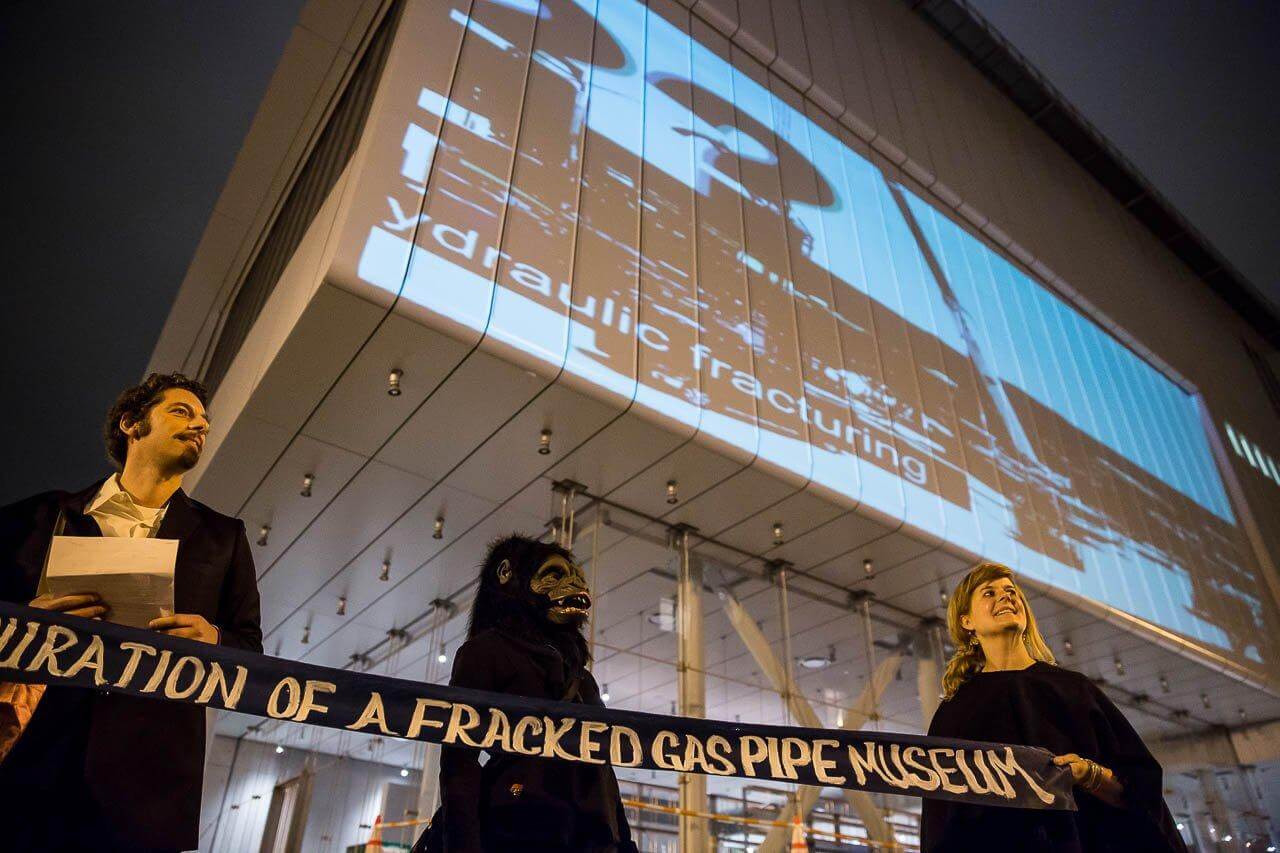Step out on the jutting terrace of the Whitney Museum of American Art and cast your gaze. New York’s skyline is undergoing major plastic surgery as ultra-luxury towers rise in all directions.
While the city’s tallest buildings were once corporate office-towers churning out profits, today’s spires are simply skypalace depositories for global loot to be parked. This is a visible result of our current era of x-treme inequality, the age of disruption: a cover for a counter-revolution in which the 1% now harvest well over 90% of new profits.
“The two greatest stores of wealth internationally today is contemporary art… And apartments in Manhattan…”
Let’s step back from the view and return to the galleries of paintings, sculpture, and installation. Isn’t art an escape from the drumbeat of financial logic? Can’t art claim its own autonomous value system where beauty and contemplation count as currency? Well yes art is precious, but in a hyper-capitalist system no sort of value can be allowed to exist outside of the extraction logic of investment markets. So as we stroll through the galleries of paintings we begin to see not imaginative lines, shapes and colors but something much more abstract: assets. We see that the same hedge fund managers sitting on the museum boards and thus presiding over the display of these assets are also trading heavily in them, sitting in auction rooms with their hand on the value lever. As MoMA trustee and head of Blackrock (the largest investment firm in the world) Larry Fink recently said, “The two greatest stores of wealth internationally today is contemporary art… and I don’t mean that as a joke, I mean that as a serious asset class… And two, the other store of wealth today is apartments in Manhattan…”

The museum starts to appear as a weapon of mass extraction.
But let’s get into a private helicopter and hover around the museum itself for a minute. Museums have represented the democratization of high culture (and the sack of nonwestern cultures generally) since even before the Louvre was opened to the public in the middle of the French Revolution. Today we see a mass public fed into its doors paying 25 dollars each or more. We see the iconic starchitect design as art jewel box, infused with a sense that you might bump into James Franco in front of a Cindy Sherman, a honeypot attracting countless young people to a creative calling. Most then end up trapped in unpayable art school debt so that they are forced into pawnship to the luxury goods and services industry to be as close to the magic of art as possible as art handlers, adjunct teachers, museum guards. But this is all obvious. What’s less obvious is the museum’s secret life as Eyes Wide Shut backdrop for hedge fund and real estate summit parties. What’s not visible are earth shattering business deals happening in proximity to the paintings. Keep in mind that some of these trustees are also invested in that up and coming asset: Brooklyn real estate portfolios, while perhaps also dabbling in SLABS (student loan asset backed securities) and of course art collecting. This is to say that the striving Brooklyn artist visiting the museum for a jolt of inspiration may not know that their creditor and landlord is enthroned inside. Seen this way, the museum starts to appear as a weapon of mass extraction, a big raygun pointing from Chelsea toward Bushwick, Crown Heights, even East New York.

This leaves us only one more place to investigate and this is beneath the museum. Which ancient temples lie in its foundations? In the case of the Whitney, the substance is indeed ancient, though not exactly holy. It’s the fracked gas that flows through the Spectra pipeline connecting fuel sites in Pennsylvania to New York City. This pipeline was quietly laid into the foundations while the museum was being erected, only briefly disrupted by Hurricane Sandy before being hidden away forever. But not really forever, since gas lines eventually corrode and the tempestuous sirens that are the muses of art are getting restless.
![Political Critique [DISCONTINUED]](https://politicalcritique.org/wp-content/uploads/2015/09/Political-Critique-LOGO.png)
![Political Critique [DISCONTINUED]](https://politicalcritique.org/wp-content/uploads/2015/09/Political-Critique-LOGO-2.png)